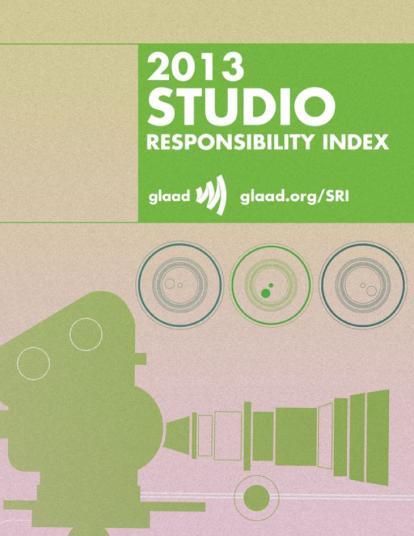If only House Republicans were this reasonable in the face of looming danger:
Forrest Barnum
Shared posts
The Bechdel Test (for Bechdel Tests)
For those Overthinkers who aren’t familiar, the Bechdel Test is a critical rule of thumb that can be used to analyze the portrayal of women in a given film or other dramatic work. The test is simple. In order to pass, there must:
- Be two women
- Who have a conversation
- About something other than a man.
Do a quick mental inventory of your favorite movies and TV shows: odds are you will find that, it’s actually surprisingly rare for a movie to pass the test. As a critical tool, we here at Overthinking It are big fans of the Bechdel Test – it has featured regularly in various articles here on OTI, including one of our all-time most popular, the Female Character Flowchart.

As I’ll argue later, the Bechdel Test is interesting because it seems so reasonable – such a low bar to clear – that when movie after movie fails, it’s genuinely interesting.
In the past few weeks, the public profile of the Bechdel Test has increased dramatically. The test itself is hardly new – it was invented for a comic strip in 1985, and there’s an internet database that catalogs whether movies pass or fail the test. For some reason, however, in the last few weeks, the test has suddenly been everywhere.

Google Trends, August 27, 2013
Part of the driving factor for the renewed interest in the Test is a handful of attempts to fashion similar critical tools that can be applied in other contexts.
The “Bechdel test for _______.”
While it’s always impossible to pinpoint exactly where and when something like this took root, it arguably started with a post at Vulture, “Does Pacific Rim have a Woman Problem?”,. The article called Rim out for its portrayal of women, citing (in one part) the Bechdel Test as evidence of the movie’s poor portrayal of women.
Some people, however felt that this was overly harsh – that the character of Mako Mori was a strong representation of women in general and Asian women in particular. In response to the article specifically and the Bechdel Test more generally, the author proposed an alternative to the Bechdel Test, called appropriately enough the “Mako Mori Test.”
What’s interesting about the Mako Mori is the motivation behind it – the author, Tumblr user Spider-Xan, identifies strongly with Mako as a “well-written Japanese woman who is informed by her culture without being solely defined by it, without being a racial stereotype, and gets to carry the film and have character development.”
Also popping into the public consciousness at about the same time is the “Vito Russo” test, essentially a Bechdel Test geared specifically for LGBT portrayals in film and television. More formalized than the others, the Vito-Russo was used in a recent report by an LGBT advocacy group to call out films and TV shows for their portrayal of LGBT characters, assigning them a “Studio Responsibility Index.”
Also trying to cash in on the trend, Slate ran with an article about a so-called “Bechdel Test for Higher Education Disruption.”
So for whatever reason, the Bechdel Test has hit the mainstream. What I want to talk about here is what makes the Bechdel Test interesting in the first place – and why I think the “alternative” Bechdel Tests I list above are ultimately less satisfying.
Before I get to far in, a quick qualification – the Bechdel Test is not the be all end all of criticism, or even feminist criticism. And while I will criticize the Vito-Russo and Mako-Mori tests as I go on in this article, the criticsm I’m leveling is a very narrow one – promoting positive portrayals of LGBT characters or minorities is a worthy goal, and trying to create critical tools to do so can be valuable. Rather, I just want to see how these tests stack up to their supposed inspiration.

Why is the Bechdel Test useful?
The first thing that’s important to observe about the Bechdel test is that the elements are for the most part objective: You don’t have to make value judgments to decide whether or not a given film contains one of the elements. You can argue a bit around the edges (Is the conversation long enough? Isn’t the subtext of the conversation about a business deal really about the love triangle the two women are involved in?) But for the most part, a movie either passes or it doesn’t, and most people can agree on whether it passes or not.
Second, not only are the individual elements of the Bechdel test objective, but the test itself is non-subjective. It’s hard to tell based on some of the rhetoric that often accompanies it, but the Bechdel Test itself imposes no normative judgments on a work for passing or not-passing – that’s done entirely by the user.
Third, while the test itself is non-normative, the test is still useful, the normative conclusion is obvious. It goes essentially without saying that the REVERSE Bechdel test is hardly ever failed – it’s EXTREMELY difficult to come up with a movie in which there isn’t at least one conversation between two men about something other than a woman (believe me, I’ve tried). But we know that in real life, that’s not the case- we expect that there are roughly the same number of women talking to other women as there are men talking to other men. Movies have a tendency to reduce the agency of women, trivializing the equality of their internal life – but that’s a hard concept to put your finger on. With the Bechdel Test, it’s easy to jump from the “What” to the “So what.”
Lastly, the Bechdel Test is valuable precisely because it’s limitations are so obvious. Because the elements are so simple, we can tell right away that it’s not going to be useful to talk about every movie. Does Saving Private Ryan pass the test? No. Does that mean that we should reject it as a bad movie? Of course not! There are many movies that pass the Bechdel Test that aren’t particularly feminist (Transformers: Dark of the Moon, for example), and many movies that DON’T pass the Bechdel test that are great exemplars of feminist thought. The test is so transparent, so it’s easy to see why the test doesn’t quite work in a given situation.

Pictured: Feminism
Which brings me to the “alternative” Bechdel tests above. Let’s break them down a bit and see how they compare to their inspiration:
The Vito Russo Test for LGBT characters:
1. The film contains a character that is identifiably lesbian, gay, bisexual, and/or transgender (LGBT).
OK, this one isn’t bad. I suppose that we can sometimes quibble about being “identifiably” LGBT since in some cases it’s left deliberately ambiguous, but this is certainly no more arbitrary than in anything in the BT. So far, so good.
2. That character must not be solely or predominantly defined by their sexual orientation or gender identity (i.e. the character is made up of the same sort of unique character traits commonly used to differentiate straight characters from one another).
We’re starting to get more subjective here. What does “solely” mean here? What kind of traits are “commonly used to differentiate straight characters from one another” mean? But this is still not too bad – while it might be hard to prove that a character PASSES this test, it’s pretty easy to tell when a character FAILS this test by being just “the gay one.”
3. The LGBT character must be tied into the plot in such a way that their removal would have a significant effect. Meaning they are not there to simply provide colorful commentary, paint urban authenticity, or (perhaps most commonly) set up a punchline; the character should matter.
What? This seems hopelessly arbitrary to me. Take the Ewoks out of Return of the Jedi and the Empire wins the battle, but that doesn’t mean that the Ewoks are particularly great characters. Alec Baldwin’s character in Glengarry Glen Ross wasn’t even in the play, and you could take him out of the movie without skipping a beat – but that doesn’t mean it’s not one kick-ass character.

Pass the Bechdel Test: A new Cadillac. Pass the Vito Russo test: a set of steak knives. Pass the Slate “Higher Education” test: you’re fired.
Note also the use of normative language – “must” in #2 and #3, “significant” and “matter” in #3. What does it mean for a character to “matter”? As far as I can tell, this is basically just another way of saying “LGBT characters should have more lines.”
Which, of course, there’s nothing wrong with! There’s nothing wrong with saying that LGBT characters should, in fact, have more lines. My issue is dressing what is essentially conventional critical analysis in a fancy-sounding title.
Even leaving that to one side, I would argue that the test lacks the intuitive normative implications of the Bechdel Test – if a movie fails the Vito Russo test, what are we supposed to take away from it?
The Mako-Mori Test for Female Characters:
The film must contain:
a) at least one female character;
Again, OK so far.
b) who gets her own narrative arc;
Starting to veer a little bit of course.
c) that is not about supporting a man’s story.
Kaboom. While this is a little easier to define than the VR test above, I think the MM test is still needlessly subjective. What exactly does it mean for an arc to “support the man’s story”?
I’m not even 100% sure that Mako Mori really passes this test – while she does get her own back story and character arc, most of her movie is spent linked to a man in a neural network to that they can fight robots in the face – culminating in a scene where said man punches a monster in the face without needing the help of Mako Mori. Of course, there are other ways of looking at it, but I think these last two elements don’t lend themselves to the kind of “True/False” analysis that makes the Bechdel test so effective.

The Slate article, I won’t even get into, since it’s really just a list of five things that the author thinks people should be talking about. Which again, that’s totally fine, but there’s no reason to drag a perfectly good Bechdel Test into your argument.
At this point, if you’re paying attention, (or just looking to be contrarian), you’ll notice that I’ve been subjecting these would-be Bechdel Tests to a standard that is every bit as squishy and subjective as those that I’m criticizing. I have two responses.
First: shut up, I’m not claiming that ALL criticism has to be subjective. In fact, the Bechdel Test is notable and rare precisely BECAUSE of it’s objective nature. Most critical analysis ISN’T broken down by discrete points, and that’s a good thing. I have no problem with using the criteria of the Vito-Russo Test or the Mako Mori test as a jumping off point for a discussion of literature – but calling it a “test” implies a false level of objectivity.
Second: OK, good point. What I clearly need is a Bechdel Test for Bechdel Tests – a way of telling if your would-be Bechdel Test alternative meets the standards of its namesake.

It was either this or a “Yo dawg, I heard you like Bechdel tests….” meme.
So what have I identified that I’m looking for in a critical tool? It should be short. It should be easy to explain. The individual elements should be uncontroversial to apply to a given work of art. The test itself should have a non-normative thrust. All of that summed up, I give you the Bechdel Test (for Bechdel Test), henceforth known as the BT(BT):
Your think-piece critical test that tries to be like the Bechdel Test is good if:
- It has four or fewer elements
- That are provable in the majority of cases
- Without resort to normative or subjective conclusions.
“But wait”, said the tiny Douglas Hofstadter that lives in my head: what happens if you apply your test to itself? Isn’t your test every bit as subjective as the tests used to criticize it? Again, I have two responses.
First: shut up.
Second: Good point! Sound off in the comments with ways of improving the BT(BT) 2.0!

Had to do it.
The Bechdel Test (for Bechdel Tests) originally appeared on Overthinking It, the site subjecting the popular culture to a level of scrutiny it probably doesn't deserve. [Latest Posts | Podcast (iTunes Link)]